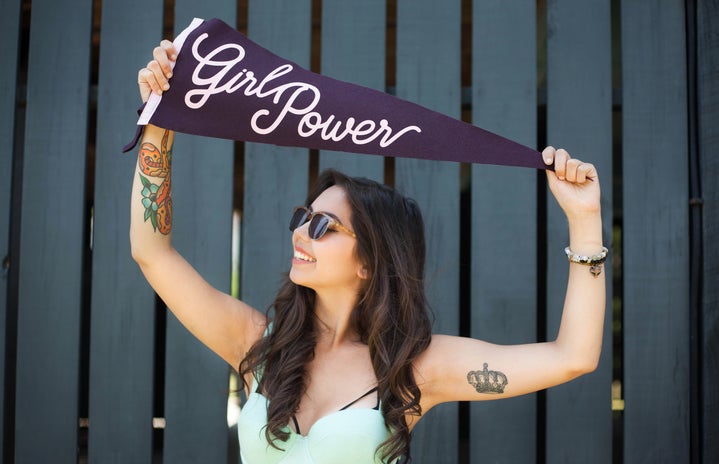She eats fast food, but never gains weight. She’s sharp with her wit, but always gives him the upperhand in arguments. She chugs beer, but never gets sloppy. She embodies society’s standards of beauty, but is unlike the other girls. She’s the Cool Girl.
The Cool Girl is everywhere. While many are trying to evict her from her residency in Hollywood, she’s putting up a good fight. She’s Donna playing basketball in That Seventies Show, Mikaela fixing cars in Transformers, Mary eating hot dogs in There’s Something about Mary and Jamie having casual sex in Friends with Benefits. While each character has subtle differences, one thing is the same—they’re tomboys who look like sex symbols.
The Cool Girl is best explained in the painfully relatable monologue from 2014’s Gone Girl. Amy Dunne (played by Rosamund Pike) says, “Cool Girl is hot. Cool Girl is game. Cool Girl is fun. Cool Girl never gets angry at her man.” As the monologue suggests, she’s everything a man wants her to be, with little to no evidence of what she wants to be. Amy Dunne also admits that she was willing to be this person to appease her man—an agonizing truth some of us can relate to.
I was first tempted by the Cool Girl trope when I was in elementary school. I traded in my pink dresses for oversized basketball shorts. I left my dollhouse and entered the field of backyard sports. While at first glance this sounds like an honorable breaking of traditional gender norms, it was only for the acceptance of men (or in this case, young boys). The feminist in me is shaking.
As I got older, the seduction of the Cool Girl trope only intensified. Men didn’t like debating about Planned Parenthood, so I kept my opinions to myself. Men didn’t like a girl showing off her body to anyone but them, so I wore more modest clothing. Men didn’t like obnoxious singing, so I hummed. I’m lucky this phase lasted only a year, but many of us aren’t that lucky.
If you genuinely enjoy talking about sports and shotgunning beers, great. If your natural temperament is mellow, wonderful. The problem occurs when girls try to fit the mold of what they think a man wants them to be, rather than embodying their true self.
The Cool Girl is a fictional character created by men for men. She attempts to thrive in a male dominated world, rather than by creating her own path. She’s not made for women to resonate with, but rather to be seen through the male gaze. She comes to life only when female viewers attempt to emulate her. This is impossible—the expectations of the Cool Girl are impossible. What is possible is expressing true authenticity. That’s the coolest thing of all.


